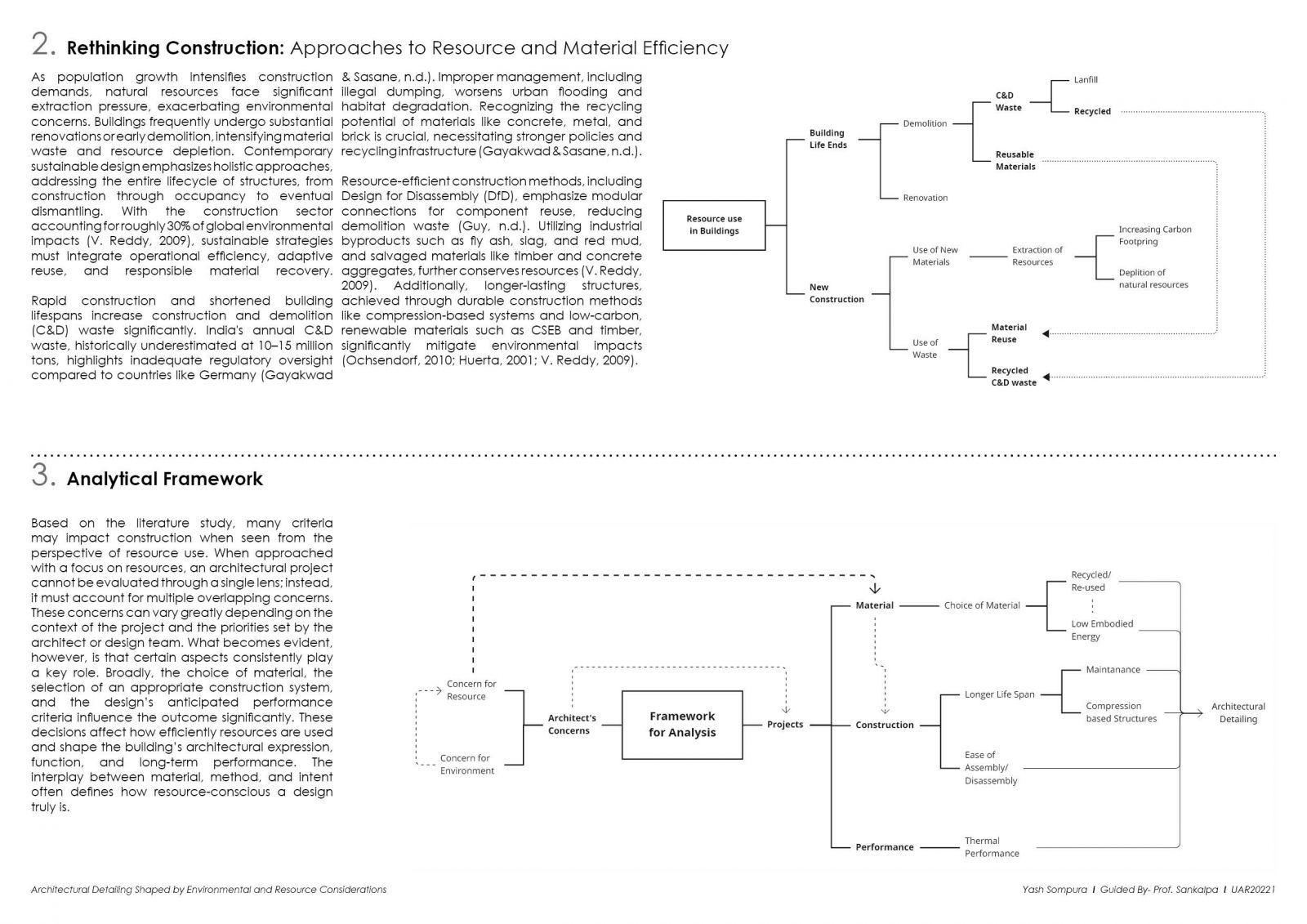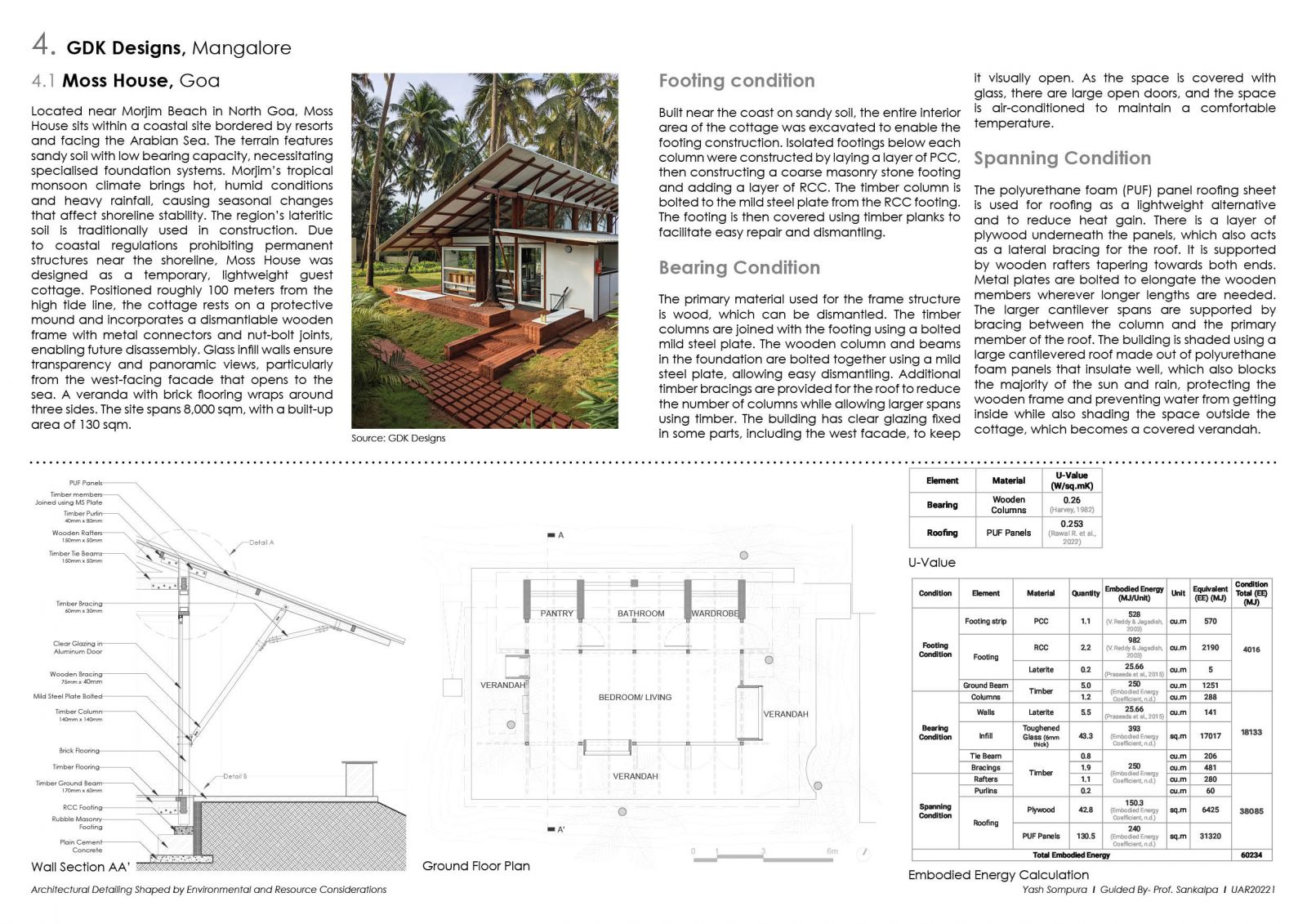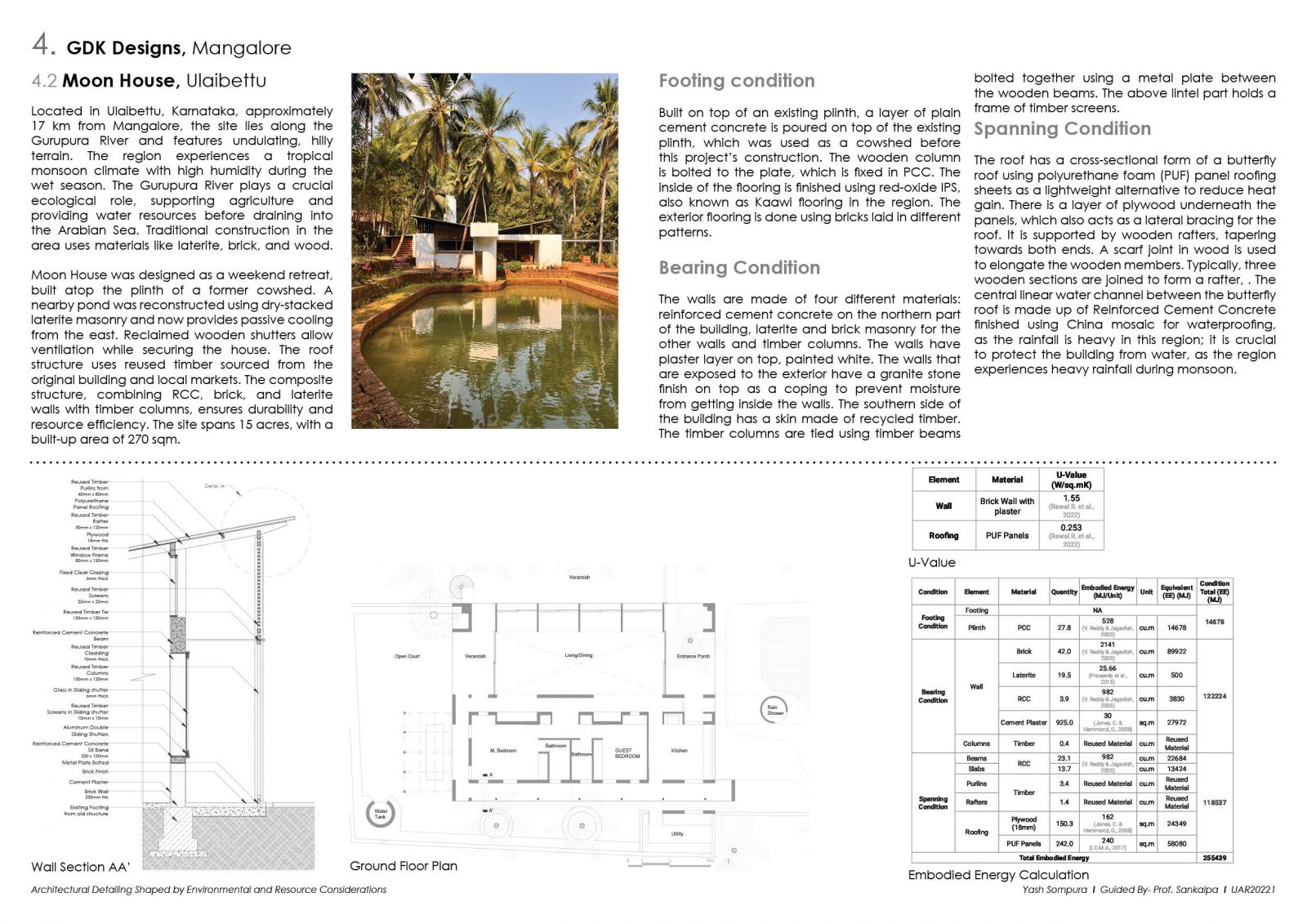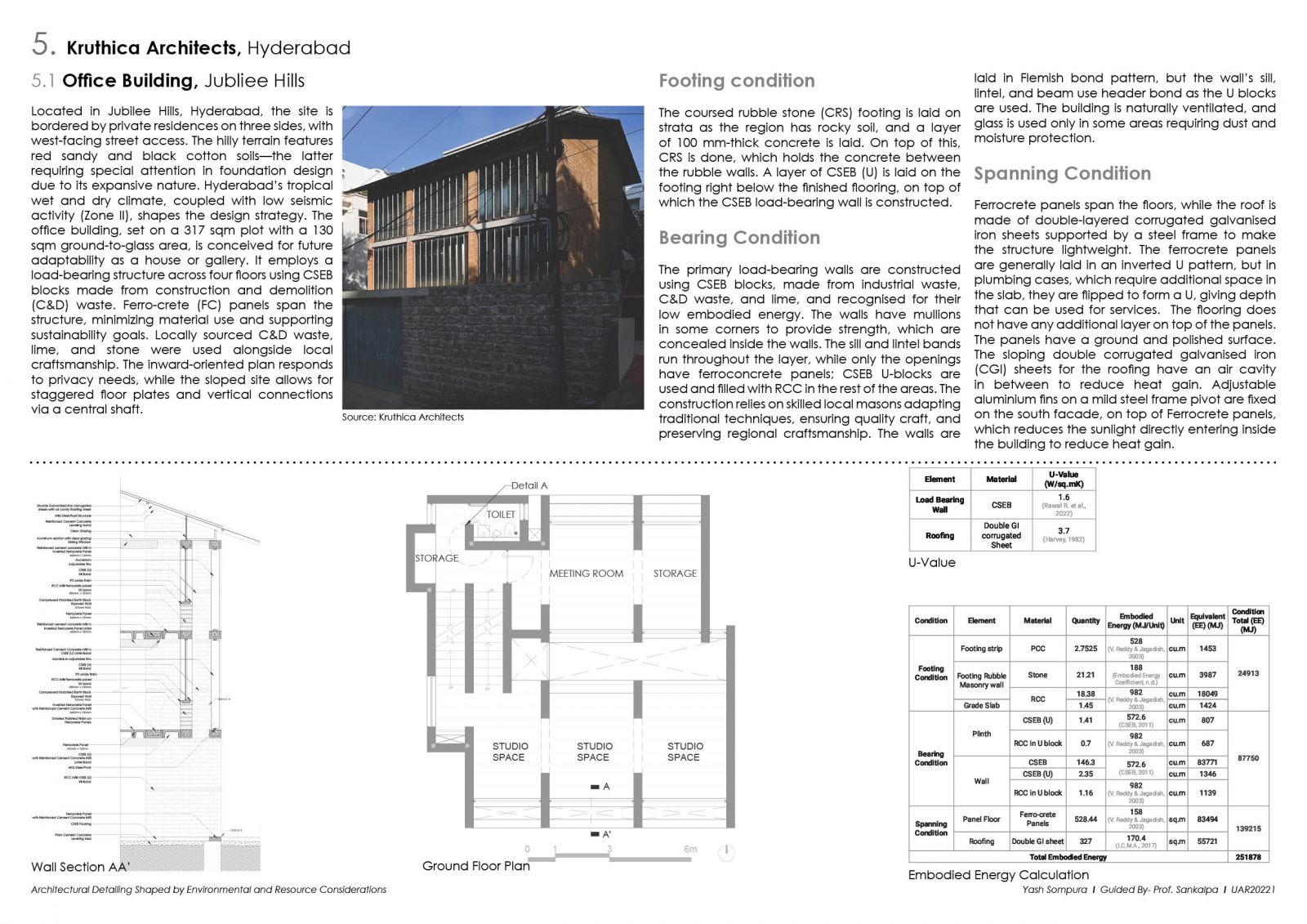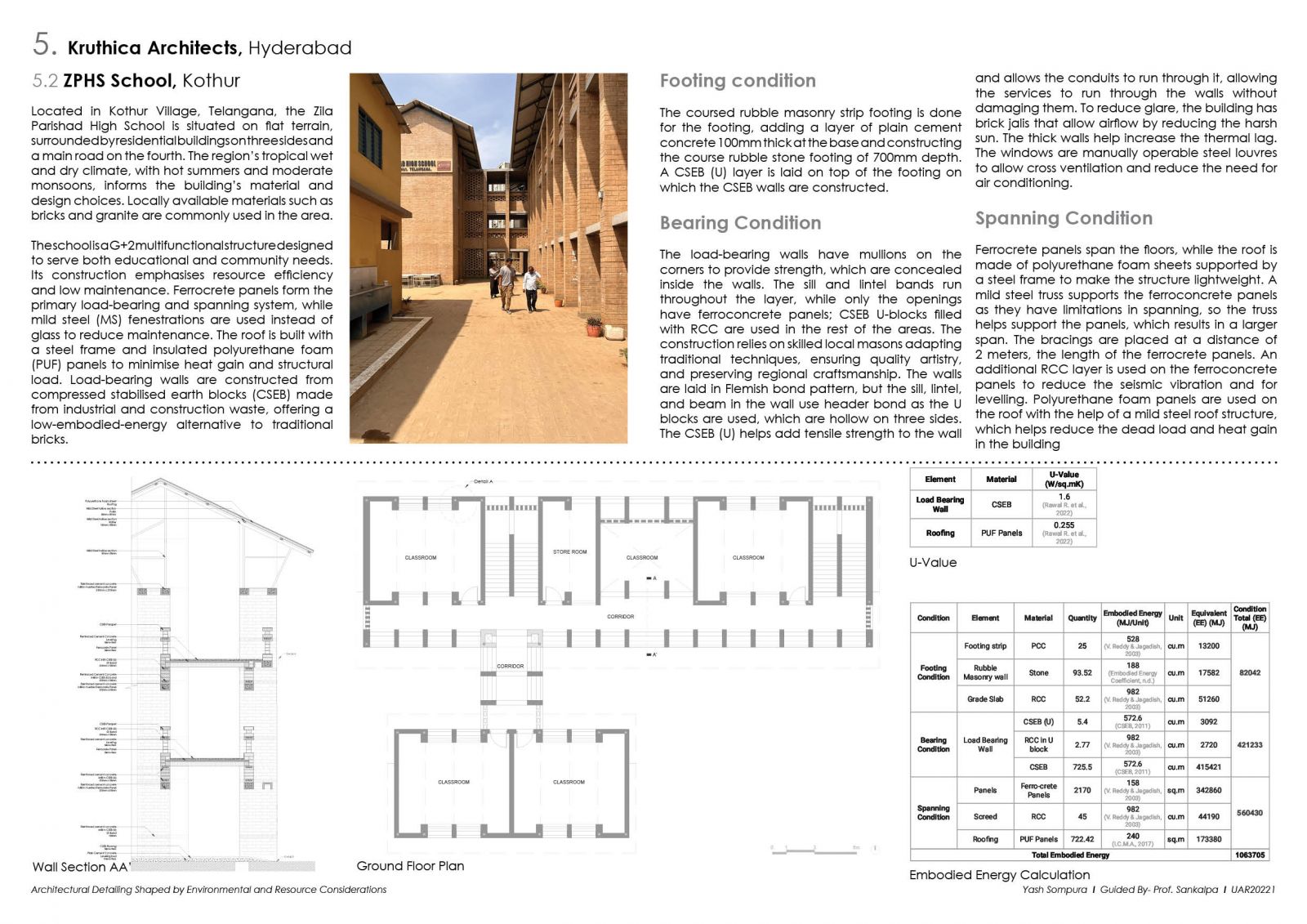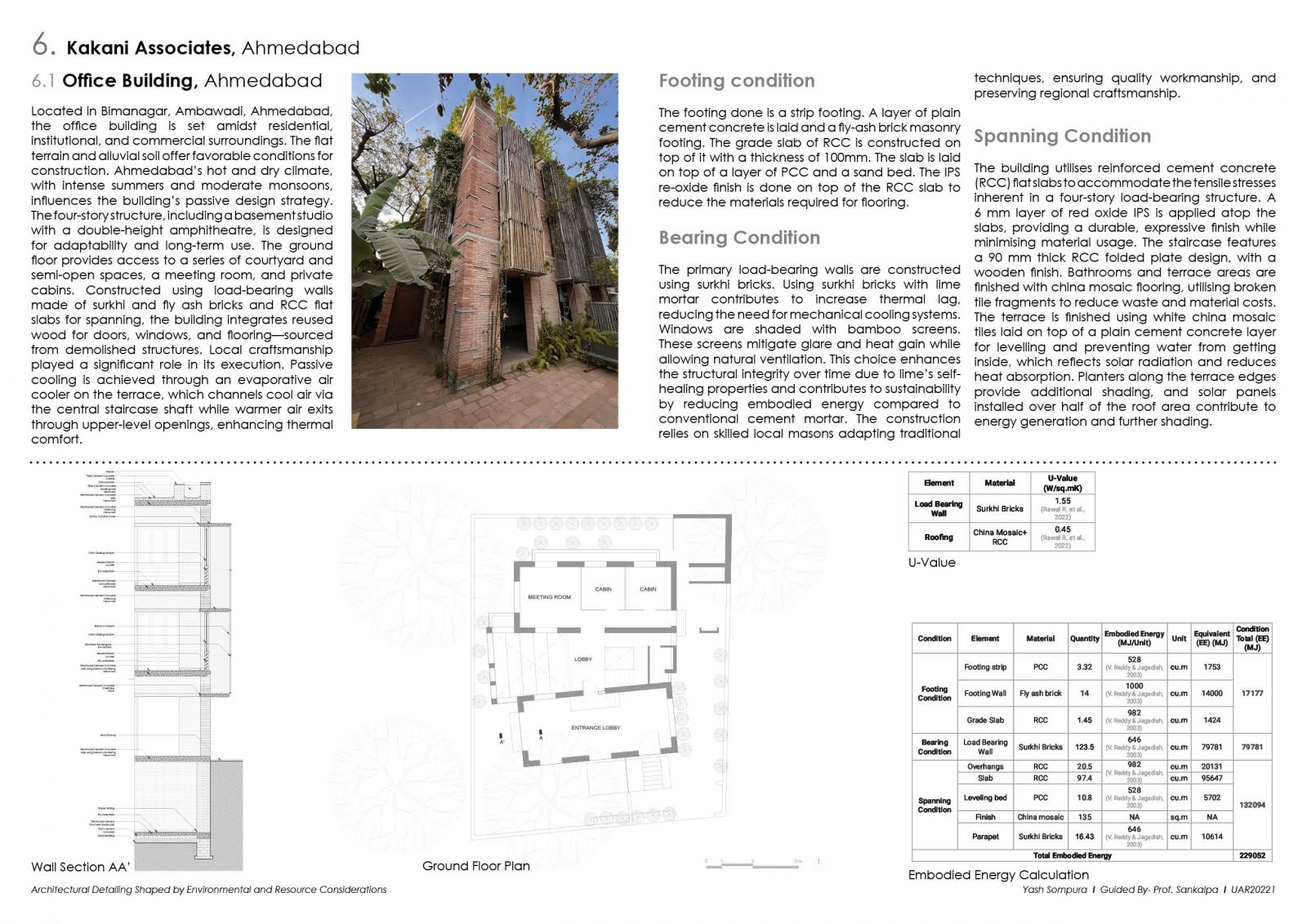Your browser is out-of-date!
For a richer surfing experience on our website, please update your browser. Update my browser now!
For a richer surfing experience on our website, please update your browser. Update my browser now!
This research investigates details as architectural responses to environmental change, mainly through the use of resources, e.g., material choices, construction methods, and detailing strategies. Contemporary practices increasingly address environmental concerns by using construction and demolition (C&D) waste as a viable building material, selecting building systems, e.g. spanning systems that reduce concrete usage or reuse or recycled material, and developing details that facilitate easy repair, assembly, and disassembly. Repurposing and recycling components whenever feasible to save embodied energy (Allen, 2016). Therefore, ease of disassembly is critical, allowing materials and components to be repurposed throughout their life cycles, which extends their environmental value. This research, through case studies and comparative analysis of projects by three Indian architects, examines emerging details and their architectural expressions in response to environment-related, resource-driven concerns. Prioritise construction techniques that reduce on-site waste and facilitate disassembly for future reutilization (Allen, 2016). By examining their recent architectural projects incorporating these approaches, this study sheds light on the expressive dimensions highlighted through the details, functionality, and performance concerns.

